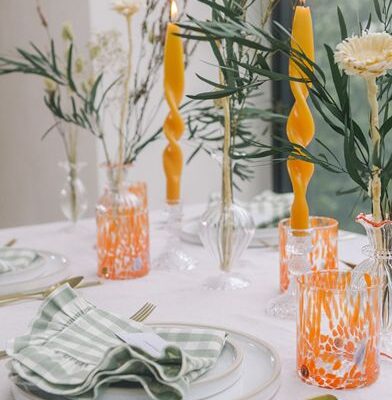3 Useful Types of Wood Used in Construction
Wood, being the earliest known construction material, has a reputation for its longevity and has been utilized by construction companies throughout history. Types of wood used in construction despite its long-standing use, wood offers a vast array of choices with hundreds of different varieties available for home construction. Notably, wood played a pivotal role as the primary material in houses constructed around 10,000 years ago.
For builders, gaining a thorough understanding of the types of wood used in construction, along with their specific properties and potential applications, is crucial. By familiarizing themselves with the different wood species prevalent in Pakistan and other regions, builders can make informed decisions regarding the most suitable wood for their projects. Furthermore, acquiring knowledge about wood grading systems can greatly aid in selecting the appropriate wood for specific construction endeavors.
The fundamental elements of types of wood used in construction strength, including density, hardness; bending strength, compression, and specific gravity, provides valuable insights into the properties of wood. By comprehending these components, builders can gain a better understanding of wood’s structural characteristics. Additionally, wood’s chemical properties are intricate in nature. Nonetheless, humans have successfully observed and comprehended the unique properties of wood, enabling them to harness its potential in constructing an extensive variety of structures.
Wood, a highly versatile material, finds application not only in the construction of homes and shelters but also in the creation of furniture.
Wood, specifically types of wood used in construction, offers several advantages as a construction material, making it a popular choice for builders. Firstly, it is a natural resource that is economically affordable, making it accessible for various construction projects. Additionally, wood provides excellent sound insulation, particularly in cold climates, contributing to a comfortable indoor environment. Furthermore, its relatively light weight makes it easier to handle during construction processes. Another notable benefit of wood is its adaptability to fabrication, as it can be shaped into various forms using machines.
Softwood
Softwood, one of the types of wood used in construction, is widely employed by carpenters in the construction industry to create inner structures like doors, window frames, and frames for hardwood components. Additionally, softwood serves as a popular material choice for crafting furniture. The denser nature of softwood compared to hardwood allows it to align closely with the principle of form-meets-function in design. This means that softwood products, such as doors, exhibit remarkable durability and can withstand years of use while maintaining their agility for smooth opening and closing actions. The versatility and reliability of softwood make it a preferred option for carpenters seeking to achieve both functionality and longevity in their projects.
1: Pinewood
It is one of the basic types of wood used in construction. Pinewood, characterized by its light yellow hue, offers woodworkers the convenience of easy staining to meet various project requirements. Although it is susceptible to decay when exposed to soil, pinewood possesses valuable qualities such as resistance to shrinkage, swelling, and warping. These attributes make it an appealing choice for crafting durable and stable elements like doors, windows, and flooring. Another advantage of pinewood is its widespread availability, as it thrives in many regions of the Northern Hemisphere. This accessibility ensures a readily accessible and renewable supply of pinewood for construction and woodworking purposes.
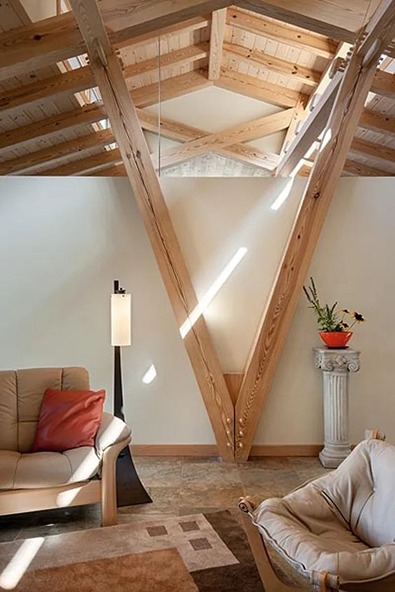
2. Cedar wood
Cedar wood showcases an enchanting light-brown color complemented by a captivating pattern of light stripes, making it an exquisite choice for creating decorative furniture pieces. It is also one of the types of wood used in construction. Its unique appearance adds a touch of elegance to drawers, chests, and closets, enhancing the visual appeal of any space. In addition to its aesthetic qualities, cedar wood possesses exceptional resistance to decay, making it highly suitable for items intended for storage purposes. Whether storing precious belongings or organizing clothing, cedar wood ensures long-lasting durability and protection. This remarkable wood species is native to the majestic mountains of the Himalayas and the enchanting Mediterranean region, where its natural beauty has been cherished for generations.

3: Fir wood
Fir wood boasts a captivating and rich reddish-brown hue, adding warmth and character to any space it graces. It is also one of the important types of Wood Used in Construction. Known for its remarkable hardness among softwoods, firwood presents a unique challenge when it comes to staining. Its dense nature restricts the absorption of stains, making it less amenable to color modification. As a result, firwood is often celebrated in its raw and natural form, allowing its inherent beauty to shine through in furniture and interior structures. With its remarkable strength and durability, firwood is a reliable choice for creating sturdy and long-lasting pieces. This exceptional wood variety can be found in abundance in both North America and Europe, where it has been cherished for its distinctive qualities in various woodworking projects.
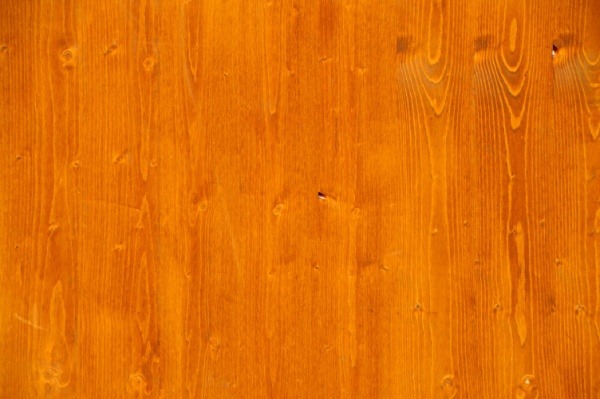
4. Spruce wood
Spruce wood stands out as robust and resilient softwood, admired for its exceptional strength in construction applications. It is one of the major types of wood used in construction. The light beige hue of spruce wood adds a touch of elegance, making it a favored choice for prestigious and high-end projects. Notably, it finds extensive use in the crafting of masts and spars for ships and aircraft, where its structural integrity and reliable performance are highly valued. While spruce wood has the potential to yield a superior finish, it demands careful attention and maintenance to combat its susceptibility to decay. This characteristic underscores the importance of proper preservation measures to ensure its long-lasting quality. Spruce wood finds its primary presence in the United States, Canada, and Europe, where it has gained widespread recognition for its versatility and strength in the realm of construction and woodworking.
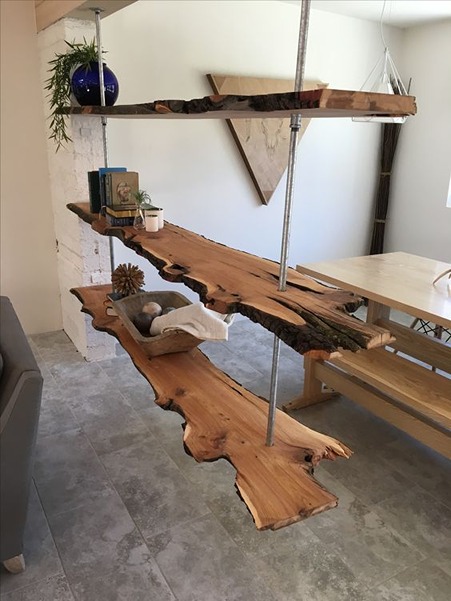
5. Hemlock wood
It is also one of the important types of wood used in construction. Hemlock wood presents an affordable alternative in the realm of construction, thanks to its combination of strength and lightweight nature. While it may be relatively susceptible to decay, its widespread availability throughout the Northern Hemisphere makes it an attractive choice for various applications, including planks, doors, and joinery. Despite its vulnerability to environmental factors, hemlock wood offers a cost-effective solution without compromising on structural integrity. Its inherent strength and favorable weight-to-strength ratio contribute to its appeal, allowing for efficient and versatile usage in construction projects. Hemlock wood’s versatility and accessibility position it as a practical and budget-friendly option for builders and craftsmen seeking reliable materials for their projects.
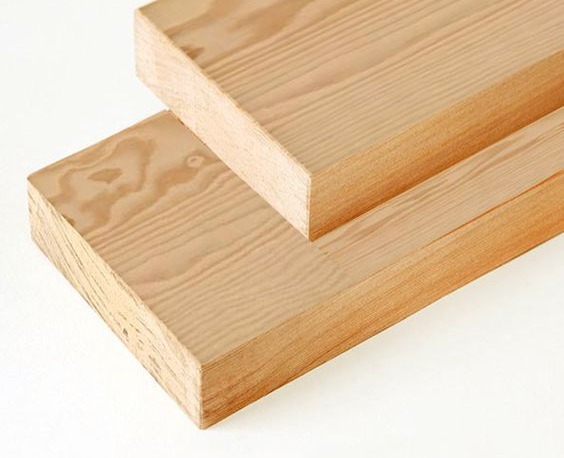
Hardwood
In construction, hardwood is often favored for its weight and strength, making it an excellent choice for foundational elements of building projects. Contractors commonly utilize hardwood for constructing ceilings, walls, and floors, taking advantage of its durability and long-lasting qualities. Due to its robust nature, hardwood is particularly well-suited for structures that require exceptional longevity. While it offers high quality and reliability, it is worth noting that hardwood can be relatively expensive. As a result, it is often selected for sophisticated home furnishings, solid wood moldings, and interior joinery, where its premium attributes are highly valued.
1. Teakwood
Teak, renowned as the most extensively utilized hardwood in construction, offers a blend of visual appeal and exceptional properties. Its light brown hue lends a captivating touch to indoor structures and furniture, enhancing the overall aesthetic appeal of the space. Teakwood boasts an array of desirable characteristics, making it a preferred choice for various applications. Notably, its remarkable strength enables it to withstand diverse weather conditions and resist decay, ensuring its longevity and durability. Types of wood used in construction. Additionally, teakwood exhibits a high level of fire resistance, making it a valuable and reliable option for construction projects where safety is paramount. The combination of its natural beauty, strength, and resilience positions teakwood as a top-quality hardwood that meets both functional and aesthetic requirements in the construction industry.
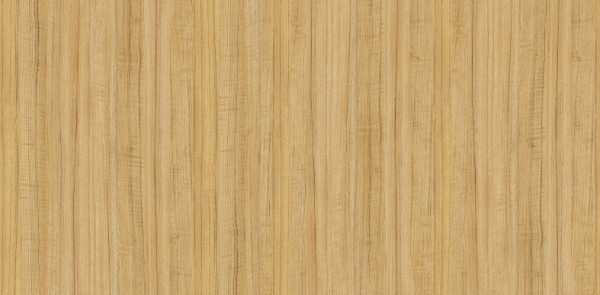
2. Rosewood
Rosewood derives its name from its distinctively rich reddish-brown hue and its captivating floral fragrance. However, this exquisite wood variety demands meticulous maintenance and regular polishing to preserve its unique composition and luster. With its origins primarily in Brazil and India, rosewood is renowned for its exceptional quality and often carries a higher price tag due to the challenges involved in sourcing and processing it. Consequently, it finds its ideal application in crafting musical instruments and exquisite decorative furniture, where its beauty and elegance can be truly appreciated.

3. Oakwood
Oakwood exhibits two distinct variations, namely red oak and white oak, each possessing its own characteristic grain patterns and finishes. The red oak variety, in particular, boasts a remarkable grain pattern that adds a touch of uniqueness to any woodwork. Oakwood is highly versatile and easily shaped and molded, allowing craftsmen to create intricate designs and structures. Furthermore, oakwood demonstrates remarkable resistance to moisture and fungal growth, ensuring its durability and longevity. Widely distributed across various regions worldwide, oakwood is a preferred choice among professionals for crafting high-quality furniture pieces, including cabinets and bookshelves, due to its exceptional strength and aesthetic appeal.
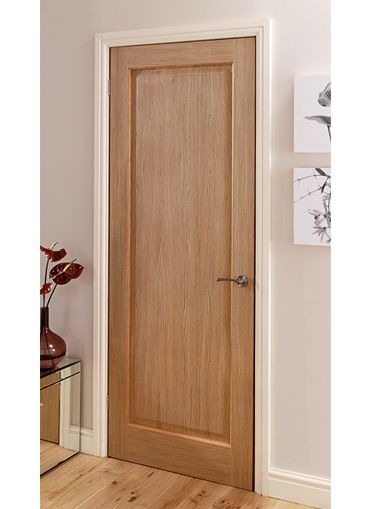
4. Maplewood
Maplewood possesses remarkable strength and exhibits a captivating natural beauty. Its light-beige color lends itself well to staining, providing versatility in achieving desired finishes, and its smooth surface makes it easy to clean and maintain. Due to its exceptional durability, maplewood is an excellent choice for furniture, ensuring longevity and withstanding everyday wear and tear. Moreover, its inherent shock-resistant properties make it an ideal material for constructing sturdy pathways and flooring. While numerous maple species exist worldwide, they are particularly abundant in regions such as North America, Canada, and Europe, where they thrive and contribute to the availability of this sought-after wood. It is best types of wood used in construction
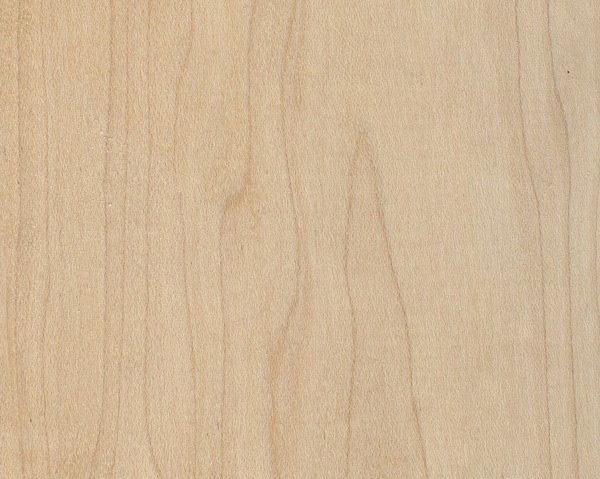
5. Ash wood
Ash wood is a favored choice among contractors for a wide range of construction applications, including furniture, cabinets, flooring, millwork, and moldings. It holds significant importance in the lumber industry due to its impressive strength, lightweight characteristics, and attractive light brown hue. With a density and grain resembling that of oakwood, ashwood offers comparable qualities at a more affordable price point, making it a cost-effective option for various projects. Its availability and versatile properties contribute to its widespread use in construction and woodworking endeavors.
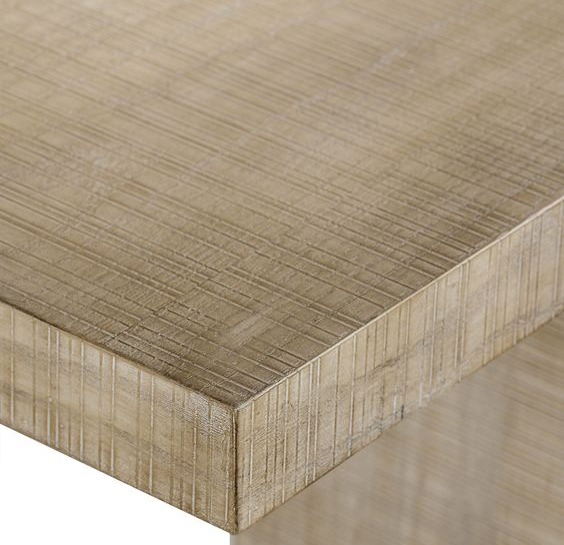
6. Mahogany
Characterized by its straight-grain pattern and rich reddish-brown hue, is a renowned wood variety. The important types of wood used in construction. The mahogany tree, native to the Americas, stands out for its impressive size and sturdiness. Its exceptional carving properties and ability to yield a superior finish have earned it a prominent place in the realm of furniture craftsmanship. Mahogany’s resistance to warping, swelling, and shrinking further enhances its appeal, making it a preferred choice for not only above-water applications but also underwater projects. Carpenters and builders alike appreciate its reliability and durability, making mahogany a versatile and valued material in the construction industry.
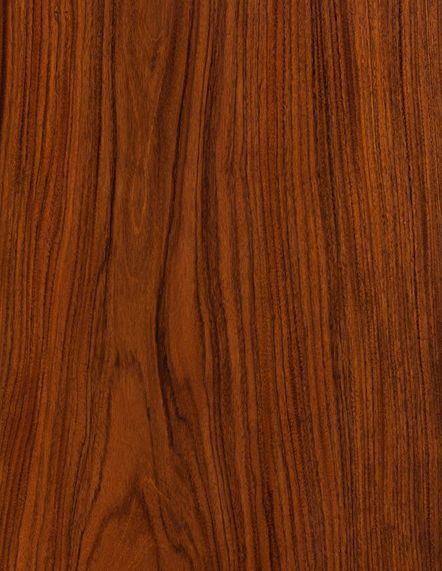
7. Beech wood
Beech wood, types of wood used in construction. Sourced from beech trees found throughout the Northern Hemisphere, possesses a distinctive pale color that lends itself well to staining processes. Despite its strength and durability, beech wood exhibits excellent workability, making it easy to cut and shape. Moreover, its relatively lower weight compared to many other hardwoods adds to its practicality and versatility. With its diverse range of properties, beechwood finds particular favor in flooring applications, where its attractive appearance and robustness can shine. Additionally, its combustion properties make it a reliable option for firewood, serving as a valuable source of warmth and comfort. Whether employed in interior design or as a fuel source, beechwood’s versatility and inherent qualities make it a sought-after material in various construction endeavors.
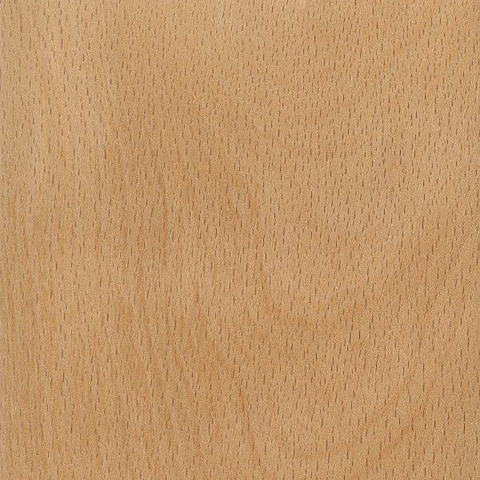
8. Cherry wood
It is also one of the major types of wood used in construction .Cherry wood, renowned for its deep and lustrous tones, is a favored choice among woodworkers seeking to enhance the visual appeal of their creations, including cabinets and furniture. Its natural beauty is further accentuated by its smooth polishing capabilities, allowing craftsmen to achieve a stunning finish. Notably, cherry wood exhibits exceptional resistance to warping, providing stability and longevity to the final product. This esteemed wood variety originates from hilly regions in Europe and Asia, where its distinct qualities have been cherished by artisans for generations.
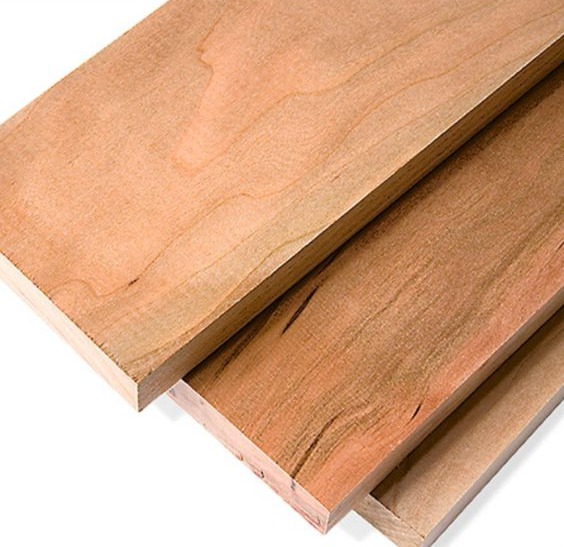
9. Walnut wood
Walnut wood, renowned for its exquisite qualities, offers woodworkers a smooth and versatile surface that lends itself well to various woodworking projects. Its workability is particularly notable, allowing craftsmen to effortlessly carve intricate designs and create beautiful profiles. It is also one of the basic types of wood used in construction Depending on the species of walnut tree, the wood can exhibit a range of shades, from the classic deep chocolate hue to lighter tones. European walnut trees, for instance, tend to showcase a lighter color palette compared to their American counterparts. In addition to its aesthetic appeal, walnut wood boasts remarkable durability and weight, making it an excellent choice for crafting sturdy dining tables, exquisite musical instruments, and other ornamental pieces that demand both strength and elegance.
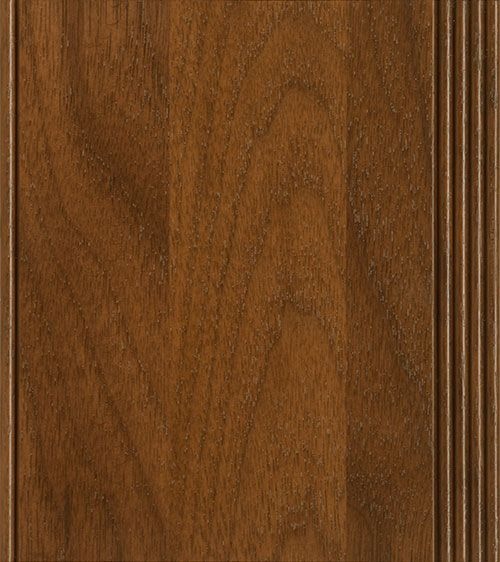
Engineered wood
Engineered wood has gained popularity in construction projects due to its remarkable versatility, strength, and cost-effectiveness. It is widely utilized in various large-scale construction endeavors, serving as load-bearing beams, wall coverings, sub-flooring, and numerous other applications. The advantages of engineered wood extend beyond its performance characteristics. One significant benefit is its sustainable nature, as many types of engineered wood are manufactured using the wood waste from other wood products. This practice helps minimize the environmental impact associated with traditional wood harvesting for residential, commercial, and industrial construction projects. By repurposing wood waste, engineered wood contributes to the conservation of natural resources and promotes a more environmentally friendly approach to construction.
1. AC plywood
The term “AC” plywood derives its name from the grading system based on the appearance and quality of the two sides of the plywood. One side is meticulously finished and sanded, earning it an A grade, while the opposite side retains its raw and unsanded state, resulting in a C grade. This distinction makes AC plywood a versatile choice for a wide range of applications. It finds great utility in projects where one side will be visible and requires a smooth and polished finish, while the other side will remain concealed. This makes it particularly suitable for various purposes such as base coatings, fences, roofs, ceilings, furniture construction, siding, and flooring. The availability of AC plywood provides professionals with a practical solution to meet both aesthetic and functional requirements, ensuring an optimal outcome for their projects.
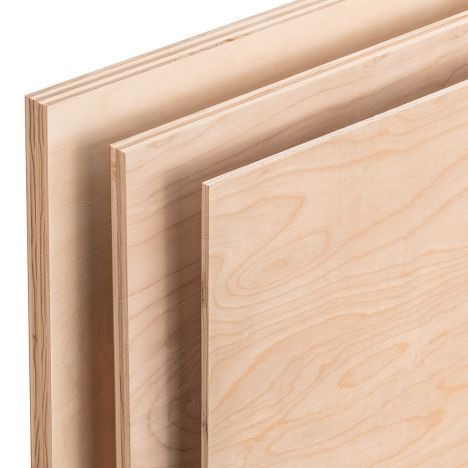
2. CDX plywood
CDX plywood is named after its specific grade, with the “X” indicating its exposure level. This type of engineered wood is frequently employed by builders in construction projects where the plywood itself is not intended to be visible or directly exposed to the elements. CDX plywood finds common use in applications such as sheathing and subflooring. Its popularity stems from its durability and strength, owed to the robust and waterproof adhesive used in its construction. The sturdiness of CDX plywood ensures it can withstand the demands of construction projects while providing reliable support and protection. Its resilience against moisture and environmental factors makes it a trusted choice for tasks where long-lasting performance is essential.
3. High-density fiberboard (HDF)
HDF, which stands for High-Density Fiberboard, is a versatile and durable material that is often referred to as hardboard. It is manufactured by recycling wood pulp and small wood fibers, which are then compressed under high pressure to create a strong and solid finished product. HDF finds wide-ranging applications in construction projects due to its exceptional strength and stability.
In the construction industry, HDF is commonly used for various purposes such as flooring, furniture construction, cabinetry, and even home appliances. Its robust nature makes it suitable for applications where strength and resilience are paramount. Additionally, HDF is often employed as a protective layer or covering for other types of wood products that may be less durable. By using HDF as a surface material, builders can enhance the longevity and durability of these wood products.
One of the advantages of HDF is its versatility in terms of appearance. Homeowners have the option to cover the hardboard with laminated paper, paint, or vinyl products to achieve a visually appealing finish. This enables them to customize the appearance of HDF to match their desired aesthetic preferences or design themes.
Overall, HDF is a reliable and sustainable choice in construction due to its utilization of recycled wood materials and its ability to provide strength and protection in various applications. Whether it’s used as flooring, furniture components, or protective coverings, HDF proves to be a valuable engineered wood product in the construction industry.
4. Laminated veneer lumber (LVL)
Engineered wood, specifically designed for structural applications, is highly suitable for carrying heavy loads in construction projects. Its exceptional strength and reliability make it an ideal choice for various structural elements. This type of engineered wood finds common use in a range of applications, including ridge beams, strutting beams, hanging beams, valley rafters, hip rafters, joists, and floor bearers.
The inherent strength and uniformity of this engineered wood enable it to withstand significant weight and stress, making it capable of supporting heavier loads compared to standard lumber. Its superior load-bearing capacity is a result of the manufacturing process, which involves bonding layers of wood strands or veneers together using strong adhesives and high-pressure techniques. This construction method ensures the wood’s structural integrity and enhances its ability to handle substantial loads without compromising its stability.
5. Oriented strand board (OSB)
This particular engineered wood product serves as a cost-effective alternative to plywood in certain applications. It is created by layering wood flakes in deliberate orientations, which are then bonded together using hot wax and other adhesives. This manufacturing process results in a durable and versatile engineered wood product suitable for various construction purposes.
One of the common uses for this type of engineered wood is as wall sheathing, providing a stable and secure surface for the exterior walls of buildings. It also serves as a reliable floor underlayment, offering support and stability to the flooring above. In addition, it is often utilized as a roof covering, providing a protective layer against the elements. Another application is in the construction of I-joists, which are structural elements used for framing floors and roofs.
6. Medium-density fiberboard (MDF)
MDF (Medium Density Fiberboard) is an environmentally friendly construction option as it is crafted using recycled wood products. This makes it a sustainable choice for professionals in the industry. Similar to hardboard, MDF boasts a higher density compared to standard plywood, rendering it well-suited for a wide range of construction projects.
One of the key advantages of MDF is its versatility, making it a popular choice for various applications. Its dense composition allows for the creation of curved walls, adding a unique and visually appealing element to architectural designs. Additionally, MDF is commonly used in furniture projects, where its strength and durability are essential for long-lasting pieces. It also finds extensive use in interior projects, such as wall panels, cabinetry, and decorative elements.
Use of Wood in Construction
With an increasing awareness of climate change, architects have embraced the integration of types of wood used in construction, aiming for a more sustainable and environmentally-friendly future. Although this approach may seem modern, the use of wood in construction has a long history predating the widespread adoption of steel. Carpenters and woodworkers have long relied on wood to enhance the structural stability of various building projects. Wood, as a construction material, is categorized into two primary types: softwood and hardwood. The distinction between these categories plays a significant role in determining the functionality and suitability of wood in construction.


